Come join us now, and enjoy playing your beloved music and browse through great scores of every level and styles!
Can’t find the songbook you’re looking for? Please, email us at: sheetmusiclibrarypdf@gmail.com We’d like to help you!
Table of Contents
William Grant Still: Three Visions (Suite for piano solo)
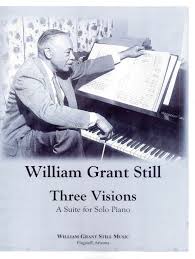
Best Sheet Music download from our Library.
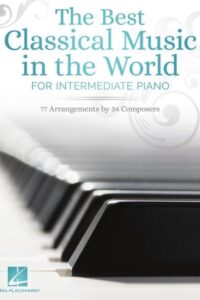
Please, subscribe to our Library.
If you are already a subscriber, please, check our NEW SCORES’ page every month for new sheet music. THANK YOU!
0:00 – Dark Horseman 1:30 – Summerland 6:00 – Radiant pinnacle
Browse in the Library:
Or browse in the categories menus & download the Library Catalog PDF:
William Grant Still
William Grant Still (1895 – 1978) was an American composer, arranger, conductor, and multi-instrumentalist, often called “the Dean of African American composers.” He was the first African American to have a symphony performed by a major orchestra in the United States, the first to conduct a major symphony orchestra, and the first to have an opera produced by a major opera company.

Early Life and Education
- Born on May 11, 1895, in Woodville, Mississippi, and raised in Little Rock, Arkansas.
- His father died when he was an infant, and his mother, a teacher, encouraged his musical interests.
- Studied at Wilberforce University, where he initially pursued medicine but shifted to music.
- Later trained at the Oberlin Conservatory of Music, then studied composition with George Whitefield Chadwick and later with avant-garde composer Edgard Varèse in New York.
Career and Achievements
- Worked as an arranger for popular and jazz bands in New York, including for W. C. Handy and Paul Whiteman.
- Became involved with the Harlem Renaissance, blending African American musical traditions with classical forms.
- His Symphony No. 1 “Afro-American” (1930) was the first symphony by an African American to be performed by a major U.S. orchestra (Rochester Philharmonic, 1931).
- Conducted the Los Angeles Philharmonic at the Hollywood Bowl in 1936, making him the first African American to lead a major orchestra in the U.S.
- His opera Troubled Island (1939, libretto by Langston Hughes and Verna Arvey) was the first by an African American staged by a major company (New York City Opera, 1949).
Musical Style
- Fused classical European traditions with African American idioms: blues, spirituals, jazz, and folk tunes.
- Emphasized lyricism, accessibility, and cultural expression rather than strict modernist abstraction.
- Advocated for a distinctly American classical music rooted in Black cultural traditions.
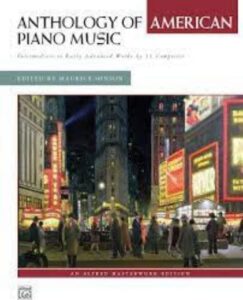
Notable Works
- Symphonies: Afro-American Symphony (No. 1), Song of a New Race (No. 2), The Sunday Symphony (No. 3), Autochthonous Symphony (No. 4), Western Hemisphere Symphony (No. 5).
- Operas: Troubled Island, A Bayou Legend, Highway 1, U.S.A.
- Chamber & Vocal Music: Lyric Quartette, Danzas de Panama, many art songs.
- Also wrote for radio, film, and popular ensembles.
Legacy
- Broke multiple racial barriers in American classical music.
- Opened doors for later generations of African American composers and performers.
- His works are increasingly studied and performed, recognized as cornerstones of 20th-century American music.
- Died in Los Angeles, California, on December 3, 1978.
William Grant Still’s music stands out for celebrating African American heritage within the classical tradition, offering a unique and dignified voice at a time when systemic racism excluded many Black composers from mainstream recognition.
Three Visions (1935) is one of William Grant Still’s most powerful works for solo piano. It is a short suite in three movements, deeply symbolic, written during the Harlem Renaissance period when Still was developing a distinctive African American voice within classical idioms. The suite is often regarded as a spiritual and philosophical statement on the human soul’s journey after death.
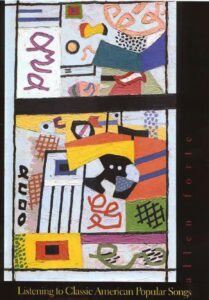
Three Visions (1935) Overview and Musical Analysis
- Title: Three Visions (for solo piano)
- Date: 1935
- Movements:
- Dark Horsemen
- Summerland
- Radiant Pinnacle
- Theme: The cycle represents the progression of the human soul: confrontation with death, passage to spiritual peace, and ultimate ascension.
1. Dark Horsemen
- Character: Turbulent, dissonant, and rhythmically urgent.
- Musical features:
- Rapid ostinati and syncopations drive the texture.
- Dense chords, sharp dynamics, and angular melodies suggest violence and inevitability — the soul’s confrontation with mortality.
- Harmonic language: rooted in tonal centers but heavily chromatic, with influences from early modernism (Still studied with Varèse).
- Strong percussive writing evokes imagery of galloping horses (possibly a reference to the biblical Four Horsemen of the Apocalypse).
Interpretation: This movement symbolizes the struggle and chaos of death, the breaking away of the soul from earthly ties.
2. Summerland
- Character: Gentle, lyrical, and serene — the most frequently performed movement.
- Musical features:
- Lush, hymn-like melody in the middle register, often played with a singing legato.
- Rich Romantic harmonies, influenced by Chopin and Debussy but colored with blues-inflected lines.
- Transparent texture, long sustained chords, and rubato create a meditative atmosphere.
- Tonal stability (often interpreted in D♭ major) provides calmness.
Interpretation: Summerland represents the spiritual paradise the soul reaches after death — peaceful rest and eternal beauty.
This movement is sometimes performed alone as an independent concert piece or even arranged for orchestra.
3. Radiant Pinnacle
- Character: Triumphant, luminous, and ascending.
- Musical features:
- Energetic rhythms, sweeping arpeggios, and brighter harmonies than in the previous movements.
- Builds momentum with a sense of striving upward, often through sequences and rising melodic gestures.
- Tonal clarity, major sonorities, and climactic chords express transcendence.
- Harmonically more consonant than Dark Horsemen, but with modern chromatic coloring.
Interpretation: This final movement depicts the soul’s union with the divine, ascending to its highest state — ultimate illumination.
Stylistic Significance
- Still fuses African American spiritual aesthetics (hymn-like phrasing, blues shadings, and rhythmic vitality) with Romantic piano traditions and 20th-century modernism.
- The three movements form a narrative arc: struggle → peace → transcendence.
- Philosophically, the suite echoes African American religious culture, yet framed in a universal human story of death and renewal.
In short, Three Visions is both a musical poem and a spiritual statement. It demonstrates Still’s ability to merge classical craft with African American cultural expression, creating a deeply humanistic and uplifting work.
Perfect — let’s dive into a harmonic walkthrough of “Summerland” from William Grant Still’s Three Visions. Since this movement is often performed alone and is the most tonal of the suite, it lends itself beautifully to harmonic analysis.
(Note: Exact bar numbers vary depending on the edition, but I’ll give the progression in sections. The piece is most often read in D♭ major.)
“Summerland” — Harmonic Analysis
Opening (mm. 1–4)
- Key: D♭ major
- Chords:
- I (D♭ major) — tonic established gently, hymn-like.
- IV (G♭ major) with added 6th/9th sonorities.
- I again, enriched by suspensions and inner voice motion.
The effect is calm, hymn-like stability. Still avoids strong cadences, instead sustaining a floating atmosphere.
First Phrase (mm. 5–12)
- Melody enters in the middle register, supported by soft chords.
- Progression:
- I → V/vi → vi (B♭ minor) → ii (E♭ minor) → V (A♭ major).
- Resolves back to I (D♭).
This is a classical diatonic motion but with added-color tones (6ths, 9ths), giving a Debussy-like lushness. The move to vi and ii emphasizes a spiritual, tender quality rather than dramatic tension.
Second Phrase (mm. 13–20)
- More chromaticism enters.
- Chords:
- I → ♭VII (C♭ major) → IV (G♭) → ii7 (E♭m7) → V7 (A♭7).
- Resolution: cadences softly back to I.
The use of ♭VII (C♭) is borrowed from folk/blues progressions. It enriches the harmony with a distinctly African American inflection inside an otherwise classical framework.
Climactic Middle Section (mm. 21–32)
- Harmonically more adventurous:
- Alternation between vi (B♭ minor) and IV (G♭ major).
- Sequence through chromatic mediants: I (D♭) → iii (F minor) → V/ii (F7) → ii (E♭ minor).
- Approaches V7 (A♭7) with stronger rhythm and dynamics.
The chromatic mediant shifts (D♭ → Fm → A♭) give the impression of warmth and expansion — the soul ascending in vision.
Return (mm. 33–40)
- Recapitulation of the opening theme.
- Progression largely tonic (I), with embellishments:
- I → IV → ii7 → V7 → I.
- Still decorates the chords with added 9ths and 11ths, keeping the sound lush and modern.
Coda (mm. 41–end)
- Gentle descent, cadencing finally on a pure I (D♭ major).
- Chords sustain with long fermatas, creating timeless stillness.
The coda is essentially a plagal cadence (IV → I), which resonates with the feeling of a hymn or spiritual.
Summary of Harmonic Style in “Summerland”
- Foundation: Firmly tonal, centered in D♭ major.
- Coloration: Use of added 6ths, 9ths, 11ths for lush textures.
- African American inflection:
- Borrowed ♭VII (C♭ major) → I.
- Blues-like coloring of melodic lines (flattened 3rd, 7th inflections).
- Narrative arc: Gentle tonic → chromatic expansion → luminous return.
- Effect: A meditative vision of paradise — serenity, lyricism, timeless rest.
So, harmonically, Summerland balances European Romanticism (Chopin, Debussy) with African American idioms (bluesy modal borrowing, plagal cadences). This is why it feels both “classical” and “soulful.”
| Artist or Composer / Score name | Cover | List of Contents |
|---|---|---|
| Kiss – Guitar TAB Play Along Volume 30 |
 |
Kiss – Guitar TAB Play Along Volume 30 |
| Kiss – Revenge (Guitar songbook) |
 |
Kiss – Revenge (Guitar songbook) |
| Kiss – The Best Of – Signature Licks (Play Along With Audio MP3) Guitar Tablature Songbook |
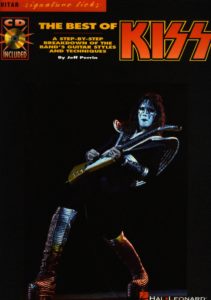 |
Kiss – Guitar TAB Play Along Volume 30 |
| Kiss – The Rain | ||
| Kiss from a Rose (Seal) | ||
| Kiss The Best Of Guitar Songbook |
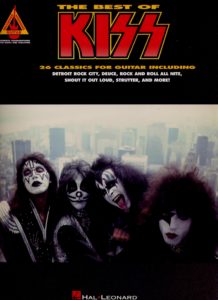 |
Kiss The Best Of Guitar Songbook-1 |
| Kitaro – Matsuri (Piano Solo Noten) |
 |
|
| Kitaro – Theme From Silk Road documentary (piano solo sheet music) |
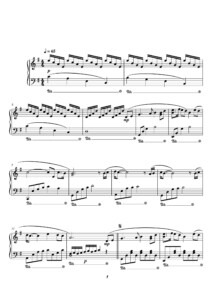 |
|
| Klassik Meets Jazz 1 Classics Meet Jazz by Korn Uwe |
 |
Klassik Meets Jazz 1 Classics Meet Jazz 1 by Korn Uwe |
| Klassik Meets Jazz 2 Classics Meet Jazz 2 By Korn Uwe |
 |
Klassik Meets Jazz 2 Classics Meet Jazz 2 By Korn Uwe Pdf |
| Klaus Badelt Pirates Of The Caribbean The Curse Of The Black Pearl Piano Solo selections |
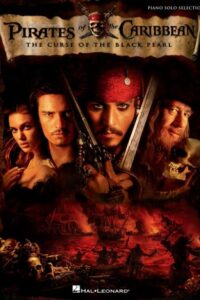 |
Klaus Badelt Pirates Of The Caribbean The Curse Of The Black Pearl Piano Solo selections |
| Klavier – Rammstein (Piano) |
 |
|
| Kleynjans – Fado Guitar |
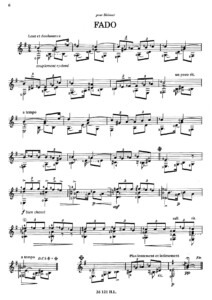 |
|
| Kleynjans Le Coin Des Guitaristes Op. 119 14 pieces faciles pour guitare |
 |
|
| KLOSE, H. – Complete Method for all Saxophones Méthode Complète pour tous les Saxophones |
 |
|
| kno – Remember Me (from Disney Pixar film Coco) |
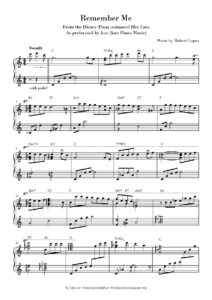 |
|
| Kobayashi Amazing Grace John Newton Piano Vocal with lyrics |
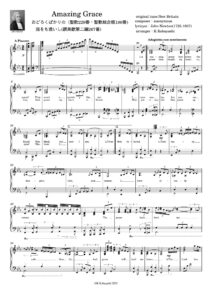 |
|
| Kodaly Zoltan Gyermekta Children’s Dance No. 1 Allegretto |
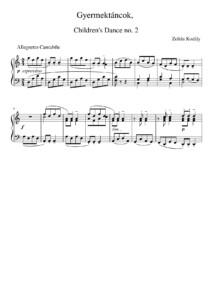 |
|
| Kodaly Zoltan Sieben Klavierstucke sept piès pour Piano Op. 11 Piano Solo |
 |
|
| Kodaly, Zoltan – Sonate Op. 8 Violoncello Solo |
 |
|
| Kodaly, Zoltan – Stabat Mater |
 |
|
| Kodaly, Zoltan 10 Hungarian Folk Songs |
 |
|
| Kodaly, Zoltan Nine Piano Pieces Neun Klavierstucke Op. 3 Piano Solo |
 |
|
| Köhler – Sonatinen & Rondos Album |
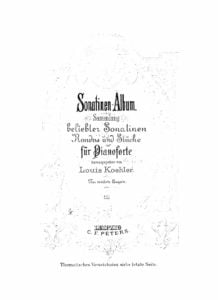 |
|
| Köhler – 12 Easy Studies, Op. 157 |
 |
|
| Köhler – Short School of Velocity, op 242 |
 |
Köhler Op. 242 |
| Koichi Sakata From Up On Poppy Hill Summer Of Farewells Arr. Satoshi Takebe From The Anime Film |
 |
|
| Koji Konda Kirby Piano Medley |
 |
|
| Koji Kondo Yoshi’s Island Athletic Theme Super Mario World 2 Piano Solo (Musescore file).mscz | Musescore File | |
| Kokuriko Zaka Kara Sayonara No Natsu Aoi Teshima |
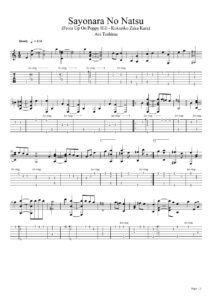 |
|
| Konrad Binienda Solo Piano Short Virtuoso Compositions |
 |
Konrad Binienda Solo Piano Short Virtuoso Compositions |
| Konstantin Pvassiliev Collected Works for Guitar Dance of the forest Ghosts |
 |
Konstantin Pvassiliev Collected Works for Guitar Dance of the forest Ghosts |
| Kool And The Gang – Celebration | ||
| Korganov Op.18 – 2 Nocturnes | ||
| Korganov – Op.26 – Ein Traum | ||
| Korngold Piano Sonata N. 2, Op. 2 |
 |
|
| Korngold Piano Sonata No. 1 | Korngold Piano Sonata No. 1 | |
| Korngold – 4 Waltzes per Pianoforte |
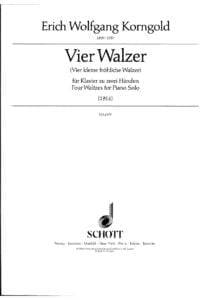 |
|
| Korngold – Mariettas Lied |
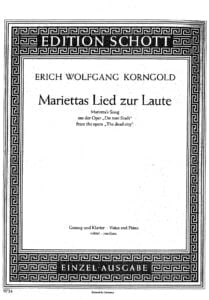 |
|
| Korngold – Op. 11 Three Pieces for piano |
 |
|
| Korngold – op. 29 Songs of the Clown |
 |
|
| Korngold – The Sea Hawk (Suite Piano solo arr.) | Korngold – The Sea Hawk (Suite Piano solo arr.) | |
| Korngold – Unverganglichkeit Op 27 The Eternal For Voice And Piano |
 |
|
| Korngold Love Scene From The Adventures Of Robin Hood (1938) | Korngold Love Scene From The Adventures Of Robin Hood (1938) | |
| Korngold Piano Sonata No. 3 In C Major Op. 25 |
 |
|
| Korobeiniki – Tetris Theme (Piano Tiles arr.) (Musescore File).mscz | ||
| Korsakov – Flight Of The Bumblebee (Musescore File).mscz | ||
| Kosma, Joseph – Autumn Leaves (Jazz Standard) | Kosma, Joseph – Autumn Leaves (Jazz Standard) | |
| Kraftwerk The Best Of Kraftwerk Piano |
 |
Kraftwerk |
| Krehbiel, Henry Edward Afro-American folksong (A Study in Racial and National Music) 1914 | Krehbiel | |
| Krein, Julien – Op 5 Eight Preludes For Piano |
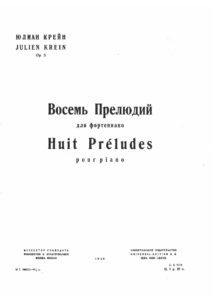 |
|
| Kreisler Liebesleid Love’s Sorrow (solo piano) |
 |
|
| Kreisler Liebeslied – Love’s Sorrow (transcribed for solo piano by Rachmaninoff) | Kreisles Liebesleid | |
| Kreisler Rachmaninoff – Liebesleid (Love’s Sorrow) Piano Solo – Alt-Wiener Tanzweisen (piano solo arr.) | Kreisler Rachmaninoff – Liebesleid (Love’s Sorrow) Piano Solo – Alt-Wiener Tanzweisen (piano solo arr.) | |
| Krenek Twelve Short Piano Pieces Written In The Twelve Tone Technique Op. 83 |
 |
|
| Krezip – Fine | ||
| Krezip – I Would Stay | ||
| Kris Kristofferson Guitar Collection with Tablature |
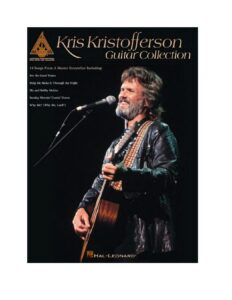 |
Kris Kristofferson Guitar Collection with Tablature |
| Kris Kristofferson Why Me, Lord (Piano Lyrics) | Kris Kristofferson Why Me, Lord (Piano Lyrics) | |
| Kt Tunstall – Big Black Horse | ||
| Kullak – The School of Octave Playing, sec 2 seven studies | ||
| Kuroso-P Senbonzakura Piano solo |
 |
|
| Kurt Rosenwinkel – Zhivago – Solo Guitar Arrangement with TABs |
 |
|
| Kurt Rosenwinkel Compositions (transcribed by Chuck Stevens) |
 |
Kurt Rosenwinkel Compositions (transcribed by Chuck Stevens) |
| Kurt Rosenwinkel Patterns |
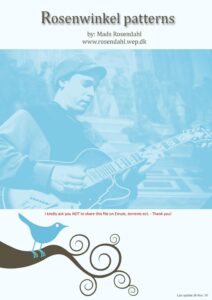 |
|
| Kurt Weill – Die Moritat von Mackie Messer (Mack the Knife) Guitar arr. |
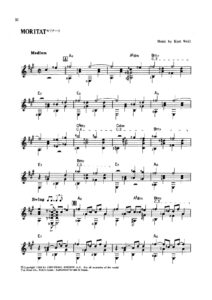 |
|
| Kurt Weill – Mack The Knife | ||
| Kurt Weill 14 songs |
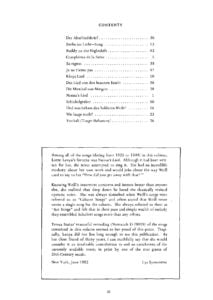 |
|
| Kurt Weill Songbook (four songs) |
 |
|
| Kurt Weill Songs Piano and saxophone |
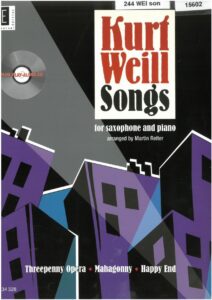 |
Kurt Weill Songs Piano and saxophone |
| Kurt Weill Surabaya Johnny From The Show Happy End Piano Vocal |
 |
|
| Kurtag Jatekok Vol. 1, 2 and 3 für Klavier for piano |
 |
|
| Kygo – Thrill Of The Chase (Piano Medley) | Kygo – Thrill Of The Chase (Piano Medley) | |
| Kylie Minogue – Cant Get You Out Of My Head | ||
| Kylie Minogue Kylie Songbook |
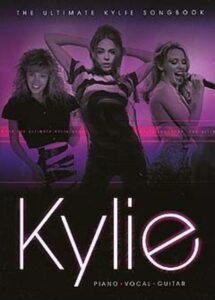 |
Kylie Minogue Kylie Songbook |
| L’ Autre Valse d’Amélie (Amélie soundtrack) Yann Tiersen | ||
| L’âge D’or No 1 20 Chansons Françaises (Partitions) |
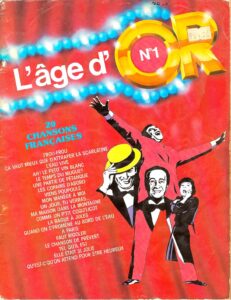 |
L’age D’or No 1 20 Chansons Francaises (Partitions) |
| L’âge D’or No 2 20 Chansons Françaises (Partitions) |
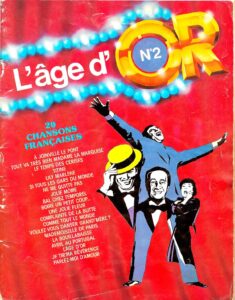 |
L’age D’or No 2 20 Chansons Francaises (Partitions) |
| L’art d’accorder soi-même son piano – C. Montal (French) 1865 | L’art d’accorder soi-même son piano | |
| L’art d’accorder soi-même son piano – C. Montal (French) 1865 |
 |
L’art d’accorder soi-même son piano |
| L’Enfant et les sortilèges – Adieu, pastourelles (Maurice Ravel) | ||
| L’étudiante Et Monsieur Henry – Constance (Piano Thème) Laurent Aknin |
 |
|
| L’immensità (Mina) | ||
| L’Innocente – Adagio (Franco Mannino) | ||
| L’italiana (Renato Zero) | ||
| L’Italiano (Toto Cutugno) | ||
| L’uomo dei sogni (Alessandro Errico) | ||
| La Bamba Guitar Solo Score And Tab |
 |
|
| La banda del pinzimonio (Nicola Piovani) | ||
| La Boheme (Charles Aznavour) | ||
| La Boîte à Matelots (Les Parapluies de Cherbourg) Michel Legran | ||
| La Canzone di Geppetto (Le avventure di Pinocchio) Fiorenzo Carpi | ||
| La canzone di Marinella (Fabrizio De Andrè) | ||
| La Casa e la Giovinezza (The Desert of the Tartars OST) Ennio Morricone | ||
| La Chanson des Vieux Amants (Jacques Brel) | ||
| La Cura (Franco Battiato) | ||
| La Dolce Vita (Nino Rota) | ||
| La donna del mio amico (Pooh) | ||
| La fille du puisatier (Alexandre Desplat) | ||
| La Guitare Jazz Manouche (Gypsy Jazz Guitar) French Français |
 |
|
| La La Land – City of Stars |
 |
City of Stars La La Land sheet music |
| La La Land – easy piano songbook |
 |
La La Land – easy piano songbook |
| La La Land – Justin Hurwitz Songbook Piano – Vocal – Guitar |
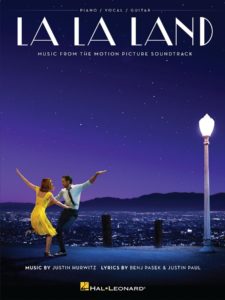 |
La La Land – Justin Hurwitz Songbook |
| La La Land – Main Theme |
 |
|
| La La Land – Main Theme (Musescore File).mscz | ||
| La La Land For Piano Solo Intermediate Level by Justin Hurwitz |
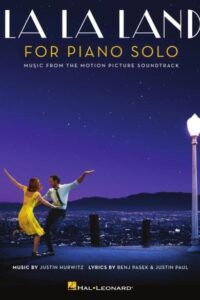 |
La La Land For Piano Solo Intermediate Level by Justin Hurwitz |
| La La Land Medley Guitar Fingerstyle Tabs Justin Hurwitz | La La Land Medley Guitar Fingerstyle Tabs Justin Hurwitz | |
| La La Land OST – Another Day of Sun Easy Piano solo |
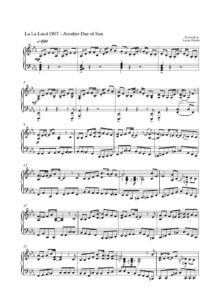 |
|
| La La Land Piano Duet Intermediate Level 1 Piano Duet 4 Hands by Justin Hurwitz |
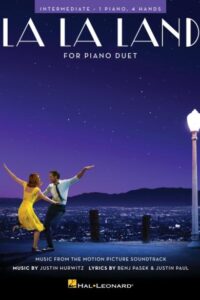 |
La La Land Piano Duet Intermediate Level 1 Piano Duet 4 Hands by Justin Hurwitz |
| La La Land- It’s Over Engagement Party Piano and voice |
 |
|
| La lettre (Lara Fabian) | ||
| La Melancolie (Georges Delerue) | ||
| La mente torna (Battisti) | ||
| La Mer – Charles Trenet (Musescore File).mscz | ||
| La Monte Young And Marian Zazeela Selected Writings (Book) |
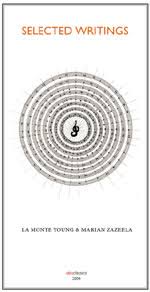 |
|
| La Monte Young Jackson Mac Law An Anthology Of Chance Operations (Book) |
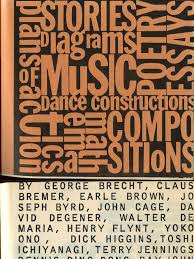 |
|
| La Monte Young The Well Tuned Piano |
 |
|
| La nouvelle guerre des boutons (Philippe Rombi) | ||
| La Noyée (Amelie soundtrack) Yann Tiersen | ||
| La Puta Castle In the Sky by Joe Hisaishi | La Puta Castle In the Sky by Joe Hisaishi | |
| La Salvadora – Manuel Quiroga La Salvadora (Zamba) (Musescore File).mscz | ||
| La Sconosciuta (Ennio Morricone) | ||
| La storia vera della Signora delle Camelie – Alfonsina delle Camelie (Ennio Morricone) | ||
| La storia vera della Signora delle Camelie – Amori senza Amore (Ennio Morricone) | ||
| La storia vera della Signora delle Camelie – Valzer (Ennio Morricone) | ||
| La Strada (Nino Rota) | ||
| La Strada (Nino Rota) shorter version | ||
| La Tigre e la Neve (Nicola Piovani) | ||
| La Valse D’amélie (Piano Solo) Yann Tiersen (Musescore File).mscz | ||
| La Vie En Rose Transcribed For Ukulele Or Guitar Sheet Music |
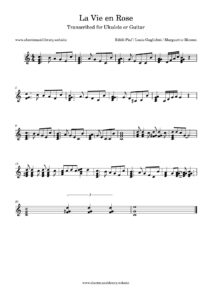 |
|
| La Vie En Rose – Guitar TABlature |
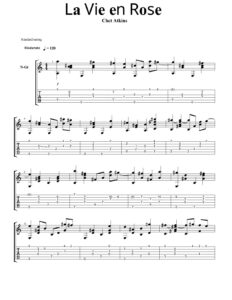 |
|
| La Vie En Rose – Transcribed For Ukulele Or Guitar sheet music.mscz | ||
| La vie en rose (Musescore file) | ||
| La Vie En Rose For Ukulele Transcribed By Lucas Schwyter |
 |
|
| La Vita È Bella (Easy Piano Solo) Nicola Piovani (Life Is Beautiful) | La Vita È Bella (Easy Piano Solo) Nicola Piovani (Life Is Beautiful) | |
| La Vita È Bella (Easy Piano Solo) Nicola Piovani (Life Is Beautiful) (Musescore File).mscz | ||
| La vita e bella (piano) |
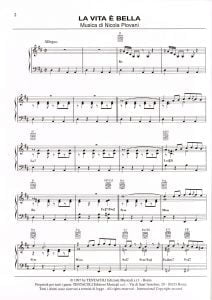 |
|
| La Voce della Luna (Nicola Piovani) | ||
| Lachenmann, Helmut – Ein Kinderspiel Sieben Kleine Stücke |
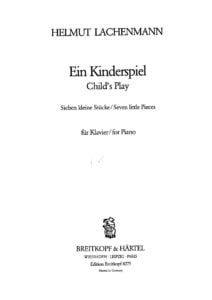 |
|
| Ladies of Jazz Billie Holiday Dinah Washington Ella Fitzgerald Nina Simone Sarah Vaughan |
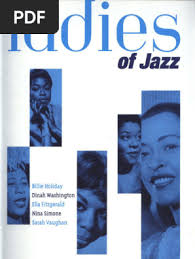 |
Ladies of Jazz Bilie Holiday Dinah Washington Ella Fitzarald Nina Simone Sarah Vaughan |
| Ladies of Soul Songbook |
 |
Ladies of Soul |
| Lady And The Tramp – Bella Notte | ||
| Lady Gaga Always remember us this way A star is born Piano solo | ||
| Lady Gaga – Hold My Hand Sheet Music |
 |
|
| Lady Gaga – Alejandro |
 |
|
| Lady Gaga – Bad Romance Piano vocal guitar chords sheet music |
 |
|
| Lady Gaga – Shallow From A Star Is Born Piano Sheet music |
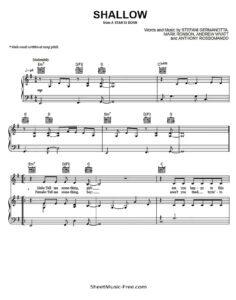 |
|
| Lady Gaga (Songbook) – Lady Gaga sheet music |
 |
Lady Gaga (Songbook) – Lady Gaga sheet music |
| Lady Gaga Born This Way Songbook |
 |
|
| Lady Gaga Monster (Easy Piano and Guitar chords) sheet music | Lady Gaga Monster |

